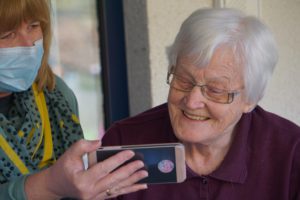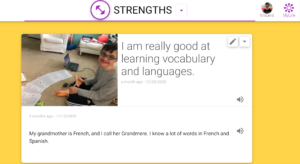Empowering Students to Participate in their Own IEP Meetings
Individual education planning (IEP) meetings can often be stressful for everyone involved and not feel particularly good for parents and teachers alike. But IEP meetings can be even more painful for students when they are not included and not prepared for what the meeting will involve.
Like many educators, I am a firm believer in having the student involved and engaged in their own IEP meeting and I often get asked about how to best involve students in the meeting planning process.
Some common mistakes I see time again at IEP meetings could be eliminated using the MyLife application as an ongoing tool for student-directed transitioning and IEP development.
Consider starting with these three strategies:
1. Prepare the student for the meeting ahead of time.
MyLife helps the student and their support team prepare for the IEP meeting in advance. This might include reviewing what is going to be discussed and who will be leading that part of the discussion. Giving your student the option of facilitating or leading the conversation for a given agenda topic can be a powerful way for including the student in the meeting and giving them some personal stake in the outcome.
Students, in general, have a difficult time remembering what is told to them. MyLife can be a visual way to remind a student of what will happen in a meeting. Many teachers discuss a student’s IEP with them, but this instruction often occurs too far in advance of the meeting or even after it has occurred.
In advance of the meeting, MyLife allows students to apply specific elements of their IEP to personalized examples and evidence to be used to anchor talking points by the student once the meeting is in progress. If the student is anxious about speaking to the group, this tool can help them to remain calm and participate as much as they prefer.

2. Have an agenda and decide who is leading the discussion ahead of time with the student.
From a teacher’s perspective, it’s important that everyone has the opportunity to contribute to the meeting dialogue. To stay on track in a way that allows a productive conversation, assign a timekeeper and make the best effort to stick to the agenda as the meeting transpires.
When the student is involved and given a role, other participants will be less inclined to talk as if the student isn’t present. With their MyLife ePortfolio projected on a laptop or big screen, a student can reference aspects of their IEP they have already discussed with their teacher, giving them speaking points and potentially specific examples that reinforce what is being discussed.
Using the built-in presentation tool within MyLife, media-rich content such as images, video, or audio files can be matched with the meeting agenda to show evidence of student learning. Students use a format similar to standard presentation tools to facilitate and involve team members in a collaborative conversation rather than a one-sided presentation.

3. Provide options for the student to actively participate and contribute to their meetings based on their preferences.
I often have students report feeling anxious about speaking in their meetings. When meeting participants discuss a student as if they’re not sitting at the table, he or she may feel less confident about speaking up and self-advocating. This is a big mistake many people make, including parents, and it’s never intentional.
It’s natural for us to want to advocate for our students. The reality is, we want to work together to encourage and empower them with the tools they need to make the most of their educational experience.
With MyLife, not only are many students able to actively participate in their own IEP meeting, some have the potential to lead their meetings and are more likely to take personal ownership in their goal management and articulating their preferences and needs throughout the year.
When students are prepared for their IEP, have the ability to decide to what extent they want to actively participate, and have pictures or other forms of enriched media to share with team members that reflect their progress, meetings are more likely to be appreciated by everyone.
Read this story published in Exceptional Parent magazine for a case study on how a transition student recently used MyLife to run his own IEP meeting: http://blog.cognitopia.com/wp-content/uploads/2018/01/EP_Magazine_Dec2017_MyLife.pdf
Tobias Rickard has been an Autism Consultant for the Eugene 4J School District in Eugene Oregon since 2005. Prior to consulting, Toby was a Special Education teacher and received his Masters in Special Education from the University of Oregon, with an emphasis on positive behavior support. Before teaching, Toby was an Employment Specialist in Boulder, Colorado supporting individuals with autism and other exceptionalities with their vocational pursuits. Toby has previously been active in Oregon Council for Exceptional Children, holding various leadership positions within the state unit. Toby is an active member of his disability community as a long-term board member of the local non-profit Supporting Access to Independent Living and as an advisory board member of KindTree Autism Rocks, both located in Eugene. Toby’s areas of interest are in student advocacy, transition, and accessibility. Particularly, the development of student-centered technologies and universal design for learning.



